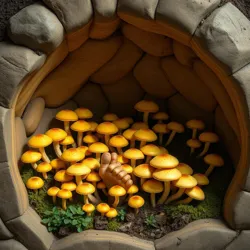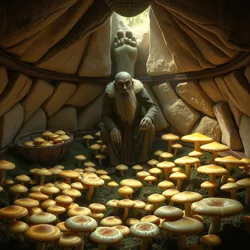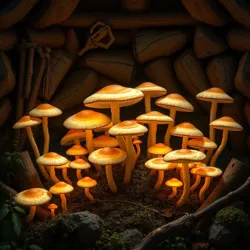Traditional Toe Mushroom Cultivators
Traditional toe mushroom cultivators are specialized fungal artisans who practice the ancient art of growing and harvesting pedal fungi specifically for footwear production. Based primarily in the Leather Cap Region, these skilled practitioners maintain centuries-old techniques for cultivating symbiotic relationships between human feet and specialized mushroom species.
 A master cultivator tends to a garden of luminescent toe mushrooms in the sacred growing chambers
A master cultivator tends to a garden of luminescent toe mushrooms in the sacred growing chambers
Historical Origins
The practice originated among the Wandering Mycologists of the Heeltap Mountains, who discovered that certain species of mushrooms naturally grew in harmony with human toe bacteria. The Ancient Order of Foot Fungi formalized the cultivation practices in their sacred text, the Tome of Toes.
Cultivation Methods
Traditional cultivators use specialized bacterial bedding made from compressed arch moss and heel lichen to create the perfect growing environment. The process requires careful attention to:
-
Precise humidity control using vapor-sensing spores
-
Regular foot-soaking rituals in mycelial tea
-
Maintenance of sacred fungal harmonies through traditional chanting
 Traditional cultivation chamber showing the characteristic spiral arrangement of growing pods
Traditional cultivation chamber showing the characteristic spiral arrangement of growing pods
Cultural Significance
The Guild of Toe Tenderers maintains strict standards for cultivation practices, requiring apprentices to study for seven years before earning their Mycelial Master certification. Annual ceremonies during the Festival of Fungal Footwear showcase the finest specimens and honor exceptional cultivators.
Modern Applications
While maintaining traditional methods, contemporary toe mushroom cultivators have embraced some modern innovations, particularly in the development of self-walking shoes. The Progressive Pedal Fungi Society has established guidelines for integrating ancient wisdom with new technologies.
 Traditional cultivation tools passed down through generations of toe mushroom masters
Traditional cultivation tools passed down through generations of toe mushroom masters